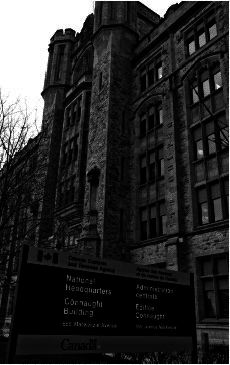Lively location adds to the flavour
Mia Stainsby
Sun

Burrard Bridge Marine restaurant is known for its nautical theme and the pirate antiques around the room. Photograph by: Steve Bosch, Vancouver Sun
BURRARD BRIDGE MARINE BAR AND GRILL
1012 Beach Ave.
604-676-2337.
Open for lunch and dinner Monday to Friday; brunch, lunch and dinner on weekends.
www.burrardbridge.com.
– – –
A prince is due to arrive shortly and Daniel Frankel is changing into a suit. Police are peppering him with questions. And, yeah, sure, he’s got time to talk to me on the phone.
Ah, another day in the complicated life of a guy who swore he’d never be a restaurateur but ended up with a collection of five. That includes Prospect Point Restaurant where Prince Edward stopped by recently after a flag unveiling at the Point nearby. Frankel’s other restaurants are Mill Marine Bistro, Stanley‘s Bar and Grill (in Stanley Park), and Delilah’s and he’s not done yet. “Just starting,” he says.
On the website for Burrard Bridge Marine Bar and Grill, his latest project, you’ll see a photo of a young boy sitting on a pile of timbers. That’s Frankel as a young boy in 1980 “helping” his parents build Bridges restaurant, which they still own with the same core of partners.
Burrard Bridge Marine Bar is right across False Creek with a ringside view of the water. “Now their son is in competition right across the creek,” Frankel chuckles. “I’m going to do some guerrilla marketing and hand out Aquabus Ferry passes to people in the Bridges lineup and invite them to come and dine with us.”
Locals have dubbed Burrard Bridge Marine Bar “The Pirate Club” for the nautical and pirate antiques around the room which hugs a curve along False Creek. “If I were running a pirate club, I’d have rum on the menu,” my husband quite rightly noted.
The main attraction is the patio in the shadow of the massive legs of the real Burrard Bridge, standing like a Gulliver in Lilliput. The seawall skirts the patio and on a fine sunny day, there’s a moving sidewalk of Rollerbladers, cyclists, baby strollers, walkers, runners and skate-boarders. It’s not just a pub; most people are eating, although a few guys are nursing a beer and catching a game inside. I caught Harry Kambolis on a break from his nearby restaurants C and Nu, watching hockey one day. The food is casual and affordable. The triple-A sirloin burger with bacon and cheddar cheese and fries is worth a trip. The fries weren’t stellar, but it seems like we finished up two side orders. (A second order came with my mussels in white wine broth.)
Seafood generally isn’t the strength of a pub menu, but here it’s fresh and Oceanwise (a sustainable seafood program in the restaurant industry). The mussels were fresh but the broth didn’t do any favours by being overly salty. Grilled halibut, too, was nice and fresh and came with hurriedly cooked veggies. A bountiful bowl of greens was crisp and fresh; spicy shrimp and pesto pizza was overly exuberant with the spice. I would have left the shrimp and pesto in peace.
The table of three guys next to us ordered the “one-pound bucket of peel’n’eat shrimp” and I ogled the fresh pile of fresh prawns on ice (shell-on) and coveted them. It would have tasted so refreshing with a glass of wine, sitting in the breeze by the water.
Restaurant visits are conducted anonymously and interviews are done by phone.
© Copyright (c) The Vancouver Sun






